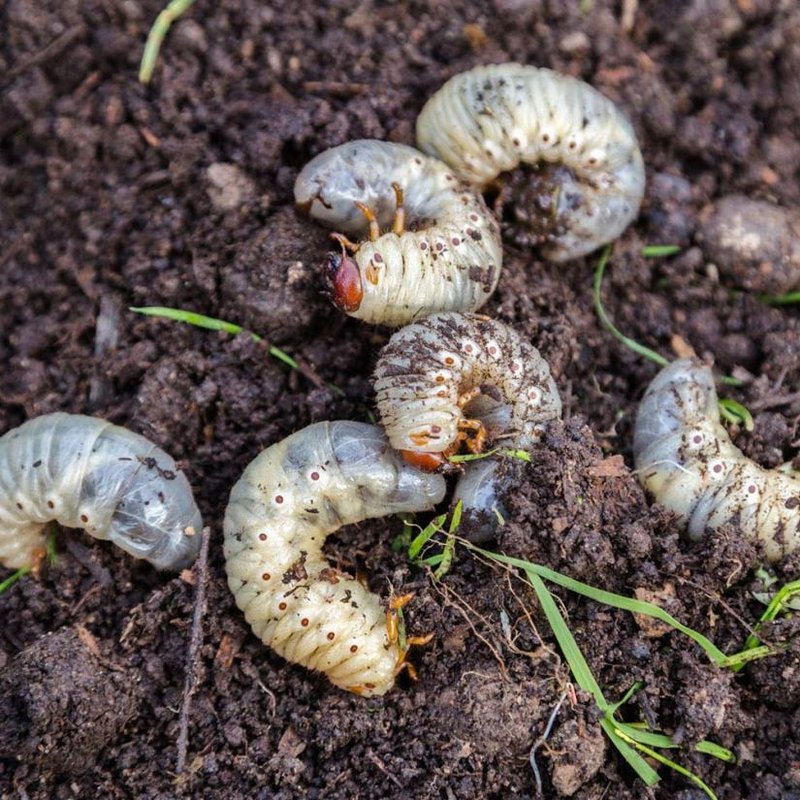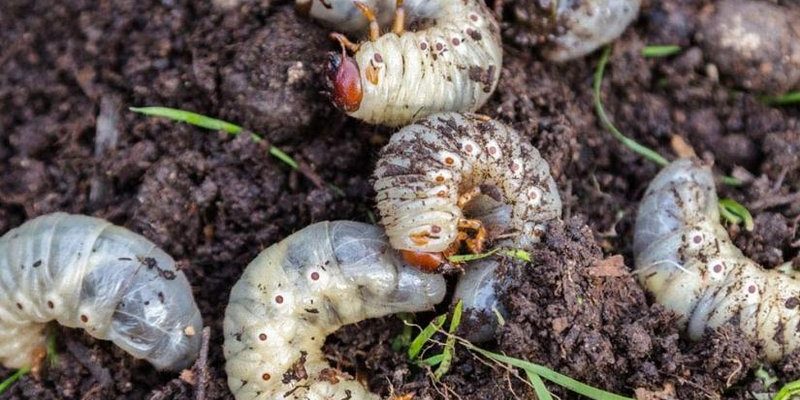
You might be wondering how these often-misunderstood larvae fit into the picture. Grub worms, primarily the larvae of beetles, break down organic matter in the soil, promoting healthier plants. Think of them as nature’s composters, doing their part to return nutrients to the earth. Let’s dive into why these little guys can be a good thing for your garden and how to incorporate them sustainably.
What Are Grub Worms?
Grub worms are the larvae of various beetles, the most common being the Japanese beetle and the June bug. These worms typically live in the soil and thrive on decaying organic matter, including dead leaves and plant material. When you see them, they often look like small, white C-shapes, curling up when disturbed. Fascinating, right?
Now, here’s the thing: while many gardeners instantly associate grub worms with destruction, they actually contribute positively to your garden. They aerate the soil as they move around, creating spaces for air and water to reach the roots of your plants. This is something you want for a healthy garden!
The Role of Grub Worms in Soil Health
Soil health is a big deal in gardening, and grub worms play a significant role. As they munch on organic matter, they help break it down into smaller particles. This decomposition process isn’t just magical; it’s essential for creating nutrient-rich soil.
Here’s a breakdown of how grub worms contribute to soil health:
- Nutrient Recycling: Grub worms help return essential nutrients to the soil, making them available for your plants.
- Soil Aeration: Their movements create tiny channels in the soil, allowing air and water to penetrate more deeply.
- Food Source for Other Organisms: Grub worms serve as a food source for birds and beneficial insects, thus supporting a balanced ecosystem.
The more diverse your soil life, the healthier your plants will be. It’s like giving your garden a whole team of helpers!
Are Grub Worms Beneficial or Harmful?
You might still have some doubts about grub worms. Are they friends or foes? The answer depends largely on their population size and the specific type of grub worm. In moderation, they’re definitely beneficial! However, large populations of certain species can lead to problems, as they might feast on the roots of your plants.
Let’s break down the pros and cons:
- Benefits: As mentioned, they improve soil structure, recycle nutrients, and support biodiversity.
- Potential Issues: High numbers of certain grubs, like those from the Japanese beetle, can damage lawns and garden plants by consuming roots.
The key is to maintain a balanced ecosystem in your garden. If you notice an excessive amount of grubs, it might be time to intervene, but don’t eliminate them entirely.
How to Encourage Grub Worms in a Sustainable Way
If you’re sold on the idea of incorporating grub worms into your sustainable garden plan, it’s time to create the perfect environment for them. Here are some easy tips to encourage their presence:
- Compost Regularly: By adding organic matter like kitchen scraps and yard waste to your compost, you’re providing a buffet for grub worms.
- Practice No-Till Gardening: This approach maintains soil structure and protects the delicate ecosystems below the surface, allowing grubs to thrive.
- Consider Companion Planting: Certain plants can attract beneficial insects, creating a balanced environment for both plants and grubs.
The more you nurture your garden’s soil, the more likely you are to foster a variety of helpful organisms, including grub worms.
Monitoring Grub Worm Populations
Keeping an eye on grub worm populations is essential for maintaining balance in your garden. Here are some signs you might want to watch for:
- Increased Bird Activity: If you notice more birds around, it could mean they’re hunting for grubs.
- Damaged Plants: Signs of wilting or dying plants might indicate a population that’s too large and hungry.
- Soft Spots in the Lawn: If you can easily pull back sections of grass, grubs could be at fault.
If their numbers seem high, consider inviting some natural predators like beneficial nematodes into your garden. They’ll help keep grub populations in check without tossing everything off balance.
Alternatives to Grub Worms
You might be curious about alternatives to incorporating grub worms into your gardening routine. While these little guys provide valuable contributions, there are other methods to enhance soil health as well.
- Worm Composting: Red wigglers can help break down organic waste faster and create nutrient-rich castings.
- Using Cover Crops: Plants like clover or vetch can improve soil structure and nutrient content without flying under your radar.
- Regular Mulching: Adding layers of mulch will help retain moisture and create a cozy environment for soil organisms.
Each of these alternatives can work alongside or even replace grub worms, depending on your specific garden needs.
Wrapping It Up
Grub worms might not be the first thing that comes to mind when you think about sustainable gardening, but they can definitely play a crucial role. They contribute to soil health, help recycle nutrients, and support overall biodiversity in your garden. By understanding their role and how to encourage a healthy population, you’re taking a significant step towards creating a sustainable gardening environment.
The next time you see a grub worm under the soil, remember they’re not just pests—they’re part of the intricate web of life that keeps your garden thriving. With a little care and attention, these tiny creatures can help you build a sustainable garden that flourishes year after year.

